
Arthur Seyss-Inquart was an Austrian Nazi politician who served as Chancellor of Austria in 1938 for two days before the Anschluss. His positions in Nazi Germany included deputy governor to Hans Frank in the General Government of Occupied Poland, and Reich commissioner for the German-occupied Netherlands. In the latter role, he shared responsibility for the deportation of Dutch Jews and the shooting of hostages.

Kurt Alois Josef Johann von Schuschnigg was an Austrian politician who was the Chancellor of the Federal State of Austria from the 1934 assassination of his predecessor Engelbert Dollfuss until the 1938 Anschluss with Nazi Germany. Although Schuschnigg considered Austria a "German state" and Austrians to be Germans, he was strongly opposed to Adolf Hitler's goal to absorb Austria into the Third Reich and wished for it to remain independent.

Wilhelm Miklas was an Austrian politician who served as President of Austria from 1928 until the Anschluss to Nazi Germany in 1938.
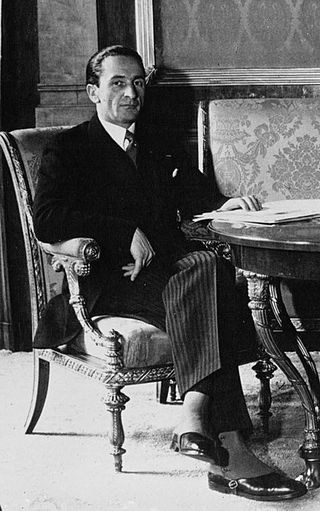
Guido Schmidt was an Austrian diplomat and politician, who served as Foreign Minister from 1936 to 1938.

The Reichsstatthalter was a title used in the German Empire and later in Nazi Germany.

Edmund Glaise-Horstenau was an Austrian Nazi politician who became the last Vice-Chancellor of Austria, appointed by Chancellor Kurt Schuschnigg under pressure from Adolf Hitler, shortly before the 1938 Anschluss.

Hugo Jury was an Austrian Nazi. He held the offices of Gauleiter of Reichsgau Niederdonau and Reichsstatthalter for Lower Austria. He committed suicide at the end of the World War II.
Wolfgang Muff was a general in the Wehrmacht during the time of Nazi Germany.

Austria was part of Nazi Germany from 13 March 1938 until 27 April 1945, when Allied-occupied Austria declared independence from Nazi Germany.

The Fatherland Front was the right-wing conservative, nationalist and corporatist ruling political organisation of the Federal State of Austria. It claimed to be a nonpartisan movement, and aimed to unite all the people of Austria, overcoming political and social divisions. Established on 20 May 1933 by Christian Social Chancellor Engelbert Dollfuss as the only legally permitted party in the country, it was organised along the lines of Italian Fascism, was fully aligned with the Catholic Church, and did not advocate any racial ideology, as Italian Fascism later did. It advocated Austrian nationalism and independence from Germany on the basis of protecting Austria's Catholic religious identity from what they considered a Protestant-dominated German state.

The Reichskommissariat Niederlande was the civilian occupation regime set up by Germany in the German-occupied Netherlands during World War II. Its full title was the Reich Commissariat for the Occupied Dutch Territories. The administration was headed by Arthur Seyss-Inquart, formerly the last chancellor of Austria before initiating its annexation by Germany.
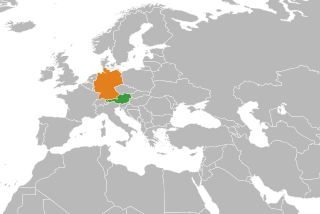
Relations between Austria and Germany are close due to their shared history and culture, with German being the official language and Germans being the major ethnic group of both countries.
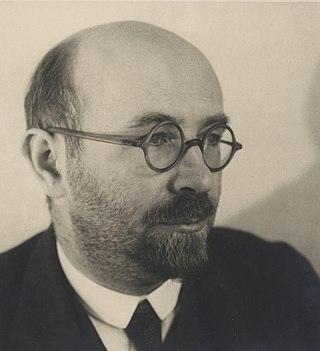
Oswald Menghin was an Austrian Prehistorian and University professor. He established an international reputation before the War, while he was professor at the University of Vienna. His work on race and culture was serviceable to the German nationalist movement of the 1930s. At the time of the Anschluss he served as Minister of Education in the cabinet formed by Arthur Seyß-Inquart. He avoided indictment as a war criminal and resumed his career in Argentina after the war.
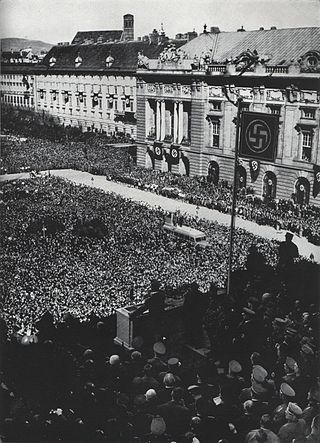
The Anschluss, also known as the Anschluß Österreichs, was the annexation of the Federal State of Austria into the German Reich on 13 March 1938.
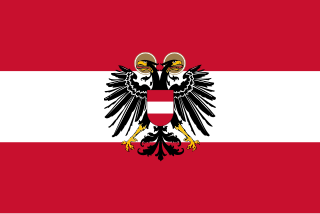
The Federal State of Austria was a continuation of the First Austrian Republic between 1934 and 1938 when it was a one-party state led by the conservative, nationalist, and corporatist Fatherland Front. The Ständestaat concept, derived from the notion of Stände, was advocated by leading regime politicians such as Engelbert Dollfuss and Kurt Schuschnigg. The result was an authoritarian government based on a mix of Italian Fascist and conservative Catholic influences.

Kajetan "Kai" Mühlmann was an Austrian art historian who was an officer in the SS and played a major role in the expropriation of art by the Nazis, particularly in Poland and the Netherlands. He worked with Arthur Seyss-Inquart in the initial Nazi government in Vienna following the Anschluss, in the General Government and in The Hague where he headed an organisation known as the Dienststelle Mühlmann which functioned as a clearing house for art expropriated in the occupied Netherlands. He has been characterised as one of the greatest art thieves among the Nazis, and possibly ever.
Events from the year 1938 in Austria
Events in the year 1945 in the Netherlands.

Heinrich Srbik was an Austrian historian who became involved on the fringes of politics before and during the Hitler years.















